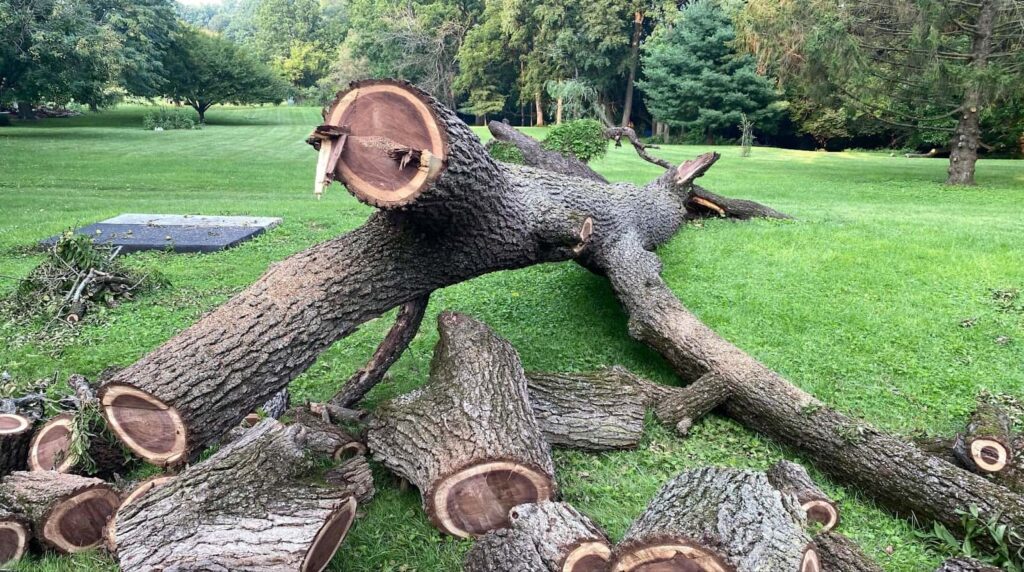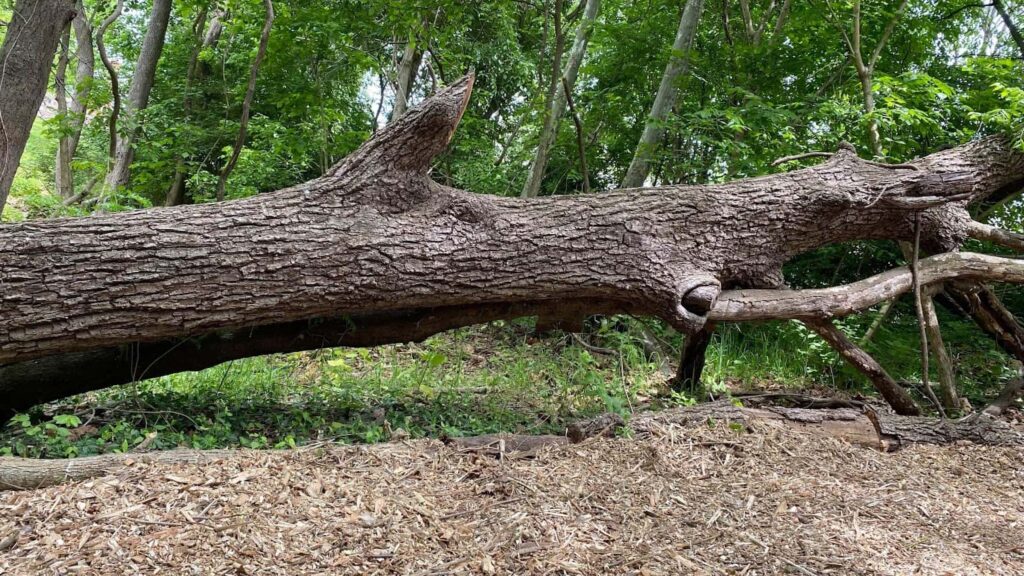Black walnut trees, known scientifically as Juglans nigra, are native to North America. These magnificent trees are highly sought after for their hardwood and nuts. A mature, 50-foot black walnut tree is not just a symbol of natural beauty but also a potentially lucrative asset.
Factors Influencing the Value of a Black Walnut Tree
The value of a black walnut tree is multifaceted, influenced by a variety of factors:
- Age and Size: The age and size of a black walnut tree are paramount in determining its value. Trees exceeding 50 feet often command a premium due to their substantial yield of quality wood. Typically, the larger the diameter and the taller the tree, the more valuable it is. For example, a tree that is over 100 years old and has a trunk diameter of 40 inches can be significantly more valuable than a younger, thinner tree;
- Health and Quality: The overall health and quality of the tree play a crucial role. Trees that are disease-free, have a straight trunk, and minimal branching (resulting in fewer knots in the wood) are considered of higher quality. The absence of defects such as rot, splits, or hollow areas in the trunk also enhances the tree’s value;
- Location and Accessibility: The location and ease of access to the tree significantly impact the harvesting cost and, consequently, its net value. A tree located in an easily accessible area, such as near a road, reduces transportation and labor costs, making it more valuable than one in a remote or difficult-to-access location.
Market Demand for Black Walnut Wood
Black walnut wood is prized for its exceptional qualities. It’s renowned for its rich, dark color, fine grain, and strength, making it a preferred material for high-end furniture, cabinetry, veneering, and gunstocks. The consistent demand in these markets makes black walnut wood a valuable commodity. The pricing for black walnut timber can vary significantly based on the quality and size of the wood, with prime specimens fetching several thousand dollars per thousand board feet (MBF).
Estimating the Value of a 50ft Black Walnut Tree
To estimate the value of a 50ft black walnut tree, the key measurement used is the diameter at breast height (DBH), typically measured at 4.5 feet above ground. For instance, a tree with a DBH of 30 inches could be worth several thousand dollars, depending on the factors mentioned earlier. The formula for calculating the value often involves the tree’s volume, quality, and current market prices for black walnut lumber.
Harvesting Considerations: A Cost-Benefit Analysis
Harvesting a black walnut tree involves various costs, which must be weighed against its potential value. These costs include:
- Labor: The cost of skilled labor to safely fell and process the tree;
- Equipment: The use of specialized machinery like chainsaws, loaders, and trucks;
- Transportation: The expense of transporting the wood to a mill or buyer;
- Potential Landscape Damage: The impact on the surrounding area, which might require restoration.
Sustainable Harvesting Practices
Sustainable harvesting practices are not just a trend; they are a necessity for maintaining the health and longevity of black walnut populations. These practices are designed to balance the need for timber with ecological considerations. Key aspects of sustainable harvesting include:
- Selective Harvesting: This involves carefully selecting trees for removal while leaving others to ensure continuous forest regeneration. Selective harvesting prevents overharvesting, promotes biodiversity, and maintains forest structure and habitat;
- Regeneration Practices: It’s important to ensure that young black walnut trees are growing to replace those that are harvested. This might involve natural regeneration or the planting of saplings;
- Minimizing Environmental Impact: Sustainable harvesting also means using methods that reduce the impact on the surrounding environment. This includes preventing soil erosion, protecting water sources, and avoiding damage to surrounding vegetation and wildlife habitats;
- Long-Term Forest Management Plans: Developing and adhering to long-term forest management plans can ensure the health and sustainability of black walnut populations for generations.
Legal and Environmental Regulations
Before undertaking the harvesting of a black walnut tree, adherence to legal and environmental regulations is imperative. This compliance ensures the protection of not just the trees but also the broader ecosystem. Key regulatory aspects include:
- Permit Requirements: Many regions require permits for tree removal, especially for large, valuable species like the black walnut. It’s important to understand and fulfill these requirements;
- Environmental Impact Assessments: Assessments may be necessary to evaluate how tree removal will affect the local ecosystem, including wildlife and plant species;
- Adhering to Local and Federal Guidelines: Regulations can vary significantly from one region to another. Compliance with both local and federal guidelines is crucial to avoid legal complications.
The Nut Factor: Additional Revenue Streams
Beyond timber, black walnut trees offer another lucrative aspect – their nuts. These nuts are not only a gourmet favorite but also have various health benefits. This creates a dual revenue stream for landowners:
- Culinary Market: Black walnut nuts are a delicacy in cooking, known for their rich flavor. They are used in a variety of dishes, from baked goods to savory recipes;
- Health and Nutritional Benefits: These nuts are known for their nutritional value, including high levels of antioxidants and beneficial fats, making them popular in the health food industry.

Expert Opinions and Appraisals
For accurate valuation and informed decisions regarding black walnut trees, seeking expertise is key. Forestry experts and professional appraisers bring a wealth of knowledge:
- Market Trends: These professionals are well-versed in current market trends and can predict potential future changes;
- Tree Valuation: They can provide detailed assessments of a tree’s value based on specific characteristics, such as age, size, health, and wood quality;
- Customized Advice: Expert advice can be tailored to individual situations, whether it’s for a single tree or an entire forest.
Climate and Geographic Influence on Black Walnut Trees
The Role of Climate in Black Walnut Growth
The growth and quality of black walnut trees are significantly influenced by climate conditions. These trees thrive in temperate climates with distinct seasons. Optimal growth occurs in regions with a mean annual temperature between 50-60°F. Frost-free growing seasons of at least 140 days are ideal for their development. The amount of sunlight, rainfall, and the presence of frost can markedly affect the growth rate and wood quality. For example, trees in warmer climates with adequate rainfall tend to grow faster and larger, potentially increasing their value.
Geographic Distribution and Its Impact
Black walnut trees are predominantly found in the eastern United States, with their range extending from southern Ontario to Texas. The soil type and topography of these regions play a crucial role in their growth. Trees growing in deep, fertile, well-drained soils, often found in river valleys, are typically of higher quality and, therefore, more valuable. In contrast, trees growing in less ideal conditions, such as on hillsides or in poorer soils, may not attain the same size or quality.
Black Walnut Tree Health Management
Preventing and Treating Diseases
Black walnut trees, like all trees, are susceptible to various diseases and pests. Common issues include walnut blight, root rot, and infestations by the walnut curculio or twig borers. Effective management of these threats is essential for maintaining tree health and, consequently, its value. Regular monitoring, timely pruning, and appropriate treatments can prevent or mitigate these problems. For example, applying fungicides can control walnut blight, and insecticides may be necessary to manage pest infestations.
Importance of Regular Tree Care
Regular care is essential for the optimal growth and health of black walnut trees. This includes proper pruning to maintain tree structure and health, ensuring adequate soil nutrition, and regular inspections for signs of stress or disease. Properly cared-for trees not only live longer but also produce higher quality wood and nuts, significantly impacting their economic value.
Economic and Social Impacts of Black Walnut Harvesting
Economic Benefits to Local Communities
The harvesting of black walnut trees contributes significantly to local economies, particularly in rural areas. The industry supports jobs in various sectors, including logging, transportation, milling, and furniture making. For instance, in areas where black walnut trees are abundant, the industry can be a major contributor to local employment and income. The sale of black walnut timber and nuts can provide substantial revenue for landowners and farmers.
Environmental and Social Considerations
While economically beneficial, black walnut harvesting must be balanced with environmental and social considerations. Sustainable practices not only protect the ecosystem but also ensure the long-term viability of the industry. Moreover, responsible harvesting can enhance local biodiversity and provide recreational spaces for communities. It’s important for industry stakeholders to engage with local communities, ensuring that their activities are aligned with broader social and environmental goals.

The Economic Valuation of a 50-Foot Black Walnut Tree
Determining the exact value of a 50-foot black walnut tree is a complex process that depends on various factors, including its diameter, wood quality, location, and market conditions. However, to provide a clearer picture of its potential worth, let’s explore some average values based on industry standards and current market trends.
Factors in Valuation
- Diameter at Breast Height (DBH): The DBH is a critical measurement for valuing a tree. For a 50-foot black walnut, the DBH can vary, but let’s consider a tree with a DBH of 30 inches, which is a reasonable estimate for a mature tree of this height;
- Board Feet Calculation: The value of timber is often calculated in terms of board feet, which is a volume measure of lumber. The formula generally used is the Doyle Log Scale, a standard method in the United States. For a black walnut tree with a DBH of 30 inches and a height of 50 feet, it could yield approximately 500 to 600 board feet of lumber;
- Market Price: The price per board foot for black walnut varies based on quality and demand. As of the latest market trends, black walnut can fetch anywhere from $3 to $6 per board foot for high-quality timber.
Estimated Value
Based on these factors, the estimated economic value of a 50-foot black walnut tree can be calculated. For a tree yielding 550 board feet of lumber at an average market price of $4.50 per board foot, the tree could be worth approximately:
550 board feet×$4.50/board foot=$2,475
It’s important to note that this is a rough estimation. Actual values can vary significantly depending on the specific characteristics of the tree and current market conditions. Additionally, costs associated with harvesting, transportation, and milling must be considered when determining the net profit from the sale of the tree.
Additional Revenue from Nuts
If the tree also produces nuts, this could add to its overall value. However, quantifying this precisely is challenging due to variations in nut production, market prices, and harvesting costs.
Conclusion
A 50-foot black walnut tree is not just a part of the landscape but a valuable commodity. Understanding its worth involves evaluating various factors from wood quality to market demands. With the right knowledge and approach, owners of these trees can unlock significant economic value.